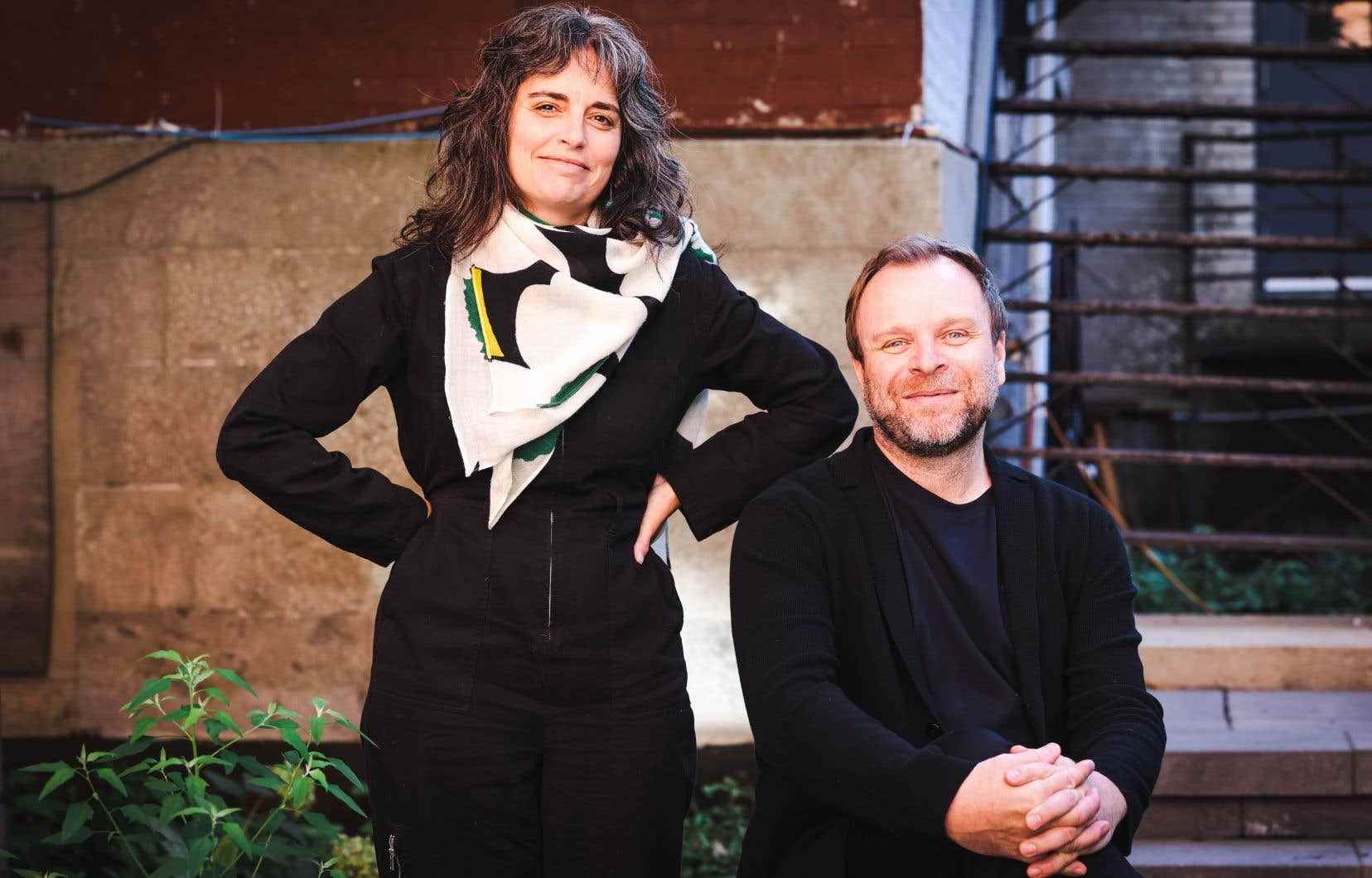Between Michel Huneault and Emmanuelle Léonard, between the photographic mission of one and the simple curiosity of the other, there is, so to speak, a year of our recent history which is summarized. The images that the two photographers took in times of a pandemic, and which are exhibited in two different places (he in a museum, she in a gallery), do more than document a health crisis. They go beyond what you think you know.
A seasoned photographer with projects, he says, dealing with “collective trauma” (Lac-Mégantic, Fukushima, Roxham Road), Michel Huneault was in Japan when COVID-19 broke out. On the plane that was repatriating him, he knew he had to act. And it was during his forties that he received the commission from the McCord Museum, from the then curator Hélène Samson. His e-mail, he still has it in mind.
“You have carte blanche to document the COVID, he repeats from memory. Tell yourself that future generations will look at your images to understand what happened. »
Without knowing “how to represent something so unknown”, he threw himself into it, in a hurry. “I was concerned about the idea of documenting traces that would quickly disappear,” he says, noting today that he started a bit too late. I had access to the top of the curve, not its ascent, when everyone has to adapt. Me, I saw fatigue, people dying…” he explains. The exhibition Incipitat the McCord Museum, brings together images from fieldwork carried out between April and August 2020 in three “spheres” — public (streets and abandoned parks), private (portraits in front of homes) and hospital (caregivers and patients included).
An experienced artist, known in particular for her view of hierarchies (social, judicial or military), Emmanuelle Léonard only became interested in COVID after a year, in March 2021. Quebec was then living under the driving ban between 8 p.m. and 5 a.m.
I was preoccupied with the idea of documenting traces that would soon disappear. I had access to the top of the curve, not its ascent, when everyone has to adapt. I have seen fatigue, people dying…
“It was not necessarily to take pictures, she confides about the exemption she obtained, with the support of her gallery. It was to see what Montreal looks like during a curfew. »
She wanted to “go out and do something”, nothing more. It was only once in the streets, deserted, that his subject appeared to him. “There was no one except a few [cas]. The police were also wandering. What was interesting was to see the mass of delivery men [de repas]. It was the most visible activity. »
Her nocturnal walks, which she will resume in May 2021 and January 2022, become moments of waiting, conducive to grasping a parallel world that is unfolding. A “new economy”. Usually, delivery people get lost in the crowd, in the frenzy of city life. The curfew “turns everything upside down”.
“I wouldn’t have done this project if the city hadn’t been completely bare. It’s interesting to see otherwise because of the curfew. The fact that everything goes out, it allows us to see things that we see less”, indicates the one who exhibits three series of images at the Ellephant gallery under the title Black Out.
body heat
Gathered around a coffee (or a tea) for the purposes of this text, Michel Huneault and Emmanuelle Léonard say they have dealt with the question of COVID-19 in Montreal according to two approaches. Their projects follow and complement each other, to the point where Michel Huneault lets out a ” yes ! of satisfaction with regard to the subject of his colleague, who remained in his own “blind spot”.
Their mode of operation will have been different. He proceeded on the principle of consent, of agreement. “Each of the photos is a request,” he says. The masks and visors didn’t make it difficult to shoot, but to make contact to explain what I was doing. She, for her part, describes her images as “stolen”, captured in the background. “These are not portraits, they are forms”, sums up Emmanuelle Léonard.
The distance between Incipit and Black Out is also aesthetic. Of a more classic nature, the result of a frontal approach and close to the subject, even when the latter is in a hospital bed, Huneault’s images bring together a diversity of cases, testimonies, realities.
Those of Leonardo navigate between description and a nebulous atmosphere. It should be noted that she opted, for a good part of her shots, for thermal photography, which captures the heat waves emitted by bodies.
Michel Huneault wanted to record as large a sample as possible. Hence the three avenues explored. He had to wait to obtain permission to enter the hospital zone, which he nevertheless obtained before the press journalists. “I wanted to move quickly, he said, and I was doing like painting, [en souhaitant] that each brushstroke builds the work. I advanced in three parallel spheres which would influence each other. »
Emmanuelle Léonard believes that her project goes beyond the subject of COVID-19 – or the curfew. Her social concerns, the “old Marxist” that she is, pushed her to see the working condition in the bodies of delivery men, their posture and their continual dependence on cell phones. “They have no employer, no union, no status [obscur]. Going towards thermal photography, I observed the bodies, the heat, the energy spent at work in exchange for money. »
Between “the DNA of the pandemic” scrutinized by Michel Huneault and the new economy observed by Emmanuelle Léonard, documenting “history in motion”, as the McCord Museum will have wanted, will not have been in vain. Both exhibitions show that these experienced periods of isolation can bring people together, either behind shared memories or through collective awareness.
